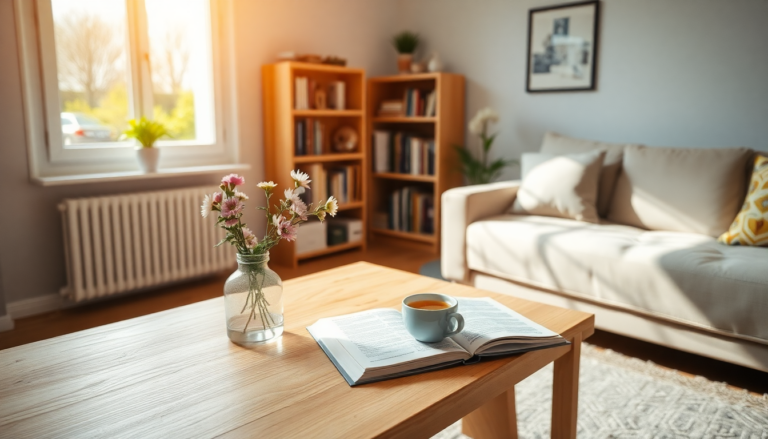Argomenti trattati
Understanding the urge to declutter
As the temperatures rise and daylight stretches into the evening, many of us feel a natural inclination to clean and organize our homes. This impulse isn’t just coincidence; it’s a biological response linked to seasonal changes. Research indicates that during winter, reduced sunlight decreases serotonin levels and elevates cortisol, leading to feelings of lethargy and clutter. However, the arrival of spring brings brighter days, encouraging us to refresh and revamp our living spaces. While cleaning can often seem daunting, particularly for those who struggle with perfectionism, adopting an anti-perfectionist decluttering approach can make the process more manageable and enjoyable.
Identifying your decluttering personality
To effectively tackle clutter, it’s essential to understand your decluttering personality. In the insightful book, “Reset Your Home, Unpack Your Emotions And Your Clutter, Step By Step,” experts Ingrid Jansen and Lesley Spellman categorize decluttering styles into five distinct types. The first type, the Happy Heaper, thrives in an organized chaos. Next is the Kind Keeper, who tends to hold onto items with emotional significance. The Warm Weeper often clings to clutter as a means of coping with past trauma, while the Harrassed Housekeeper juggles numerous responsibilities, leading to a cluttered environment. Lastly, the Nostalgic Knee-deeper finds themselves overwhelmed by their possessions, often feeling judged by their situation.
The challenges of perfectionism
It’s a common misconception that all perfectionists maintain tidiness. In reality, perfectionism can hinder the decluttering process. Dr. Anastasia Ristau, a licensed psychologist, points out that high expectations can lead to analysis paralysis, making it difficult to even begin the decluttering journey. This overwhelming need to plan everything perfectly can create frustration and shame, further complicating the process. Many perfectionists fear making mistakes or regretting their decisions, which can create significant roadblocks in their efforts to declutter.
The anti-perfectionist decluttering method
To combat the pressures of perfectionism, Jansen and Spellman advocate for an anti-perfectionist approach to decluttering. This method emphasizes progress over perfection, encouraging individuals to take small, manageable steps rather than attempting to overhaul their entire home in one day. The goal is to create a livable space that feels inviting and comfortable without the emotional burden that often accompanies clutter.
Starting with small steps
For those who struggle with the idea of tackling their clutter, starting small can lead to significant changes. Instead of overwhelming yourself with a long list of tasks, begin with one simple area, such as a junk drawer or a single shelf. Setting aside just 15 minutes a day can yield surprising results. By focusing on small, achievable goals, you can steadily progress without feeling burnt out. This method encourages a sustainable approach to organization, helping you maintain a clutter-free environment in the long run.
The importance of self-awareness
Understanding your personal preferences regarding clutter is crucial. Some individuals thrive in lively, full environments, while others feel more at ease with clear surfaces. Reflecting on your comfort levels can guide your decluttering process. Ask yourself questions such as: “Do I prefer a cozy, cluttered space or a minimalist environment?” and “How much clutter can I tolerate before it becomes overwhelming?” Being honest with yourself about these preferences will help you create a space that feels right for you.
Practical strategies for decluttering
To maintain an organized home, consider implementing effective strategies, such as the “touch it once” rule. This method, reminiscent of Marie Kondo’s philosophy, encourages you to make immediate decisions about each item you encounter: keep, donate, or discard. By tackling items as you pick them up, you streamline the process and avoid unnecessary clutter buildup. Additionally, resist the temptation to purchase new organizational supplies until after you’ve decluttered. This ensures that you only buy what you truly need and helps you make informed decisions about storage solutions.
The journey to a clutter-free home
Ultimately, the journey to a clutter-free home is a personal one. Embrace the idea that decluttering is not a destination but a continuous process. By fostering a mindset focused on progress rather than perfection, you’ll find that maintaining an organized space becomes more achievable and less stressful. Remember, it’s perfectly fine to have moments of clutter; what matters most is your ability to create a living environment that reflects your lifestyle and well-being.

